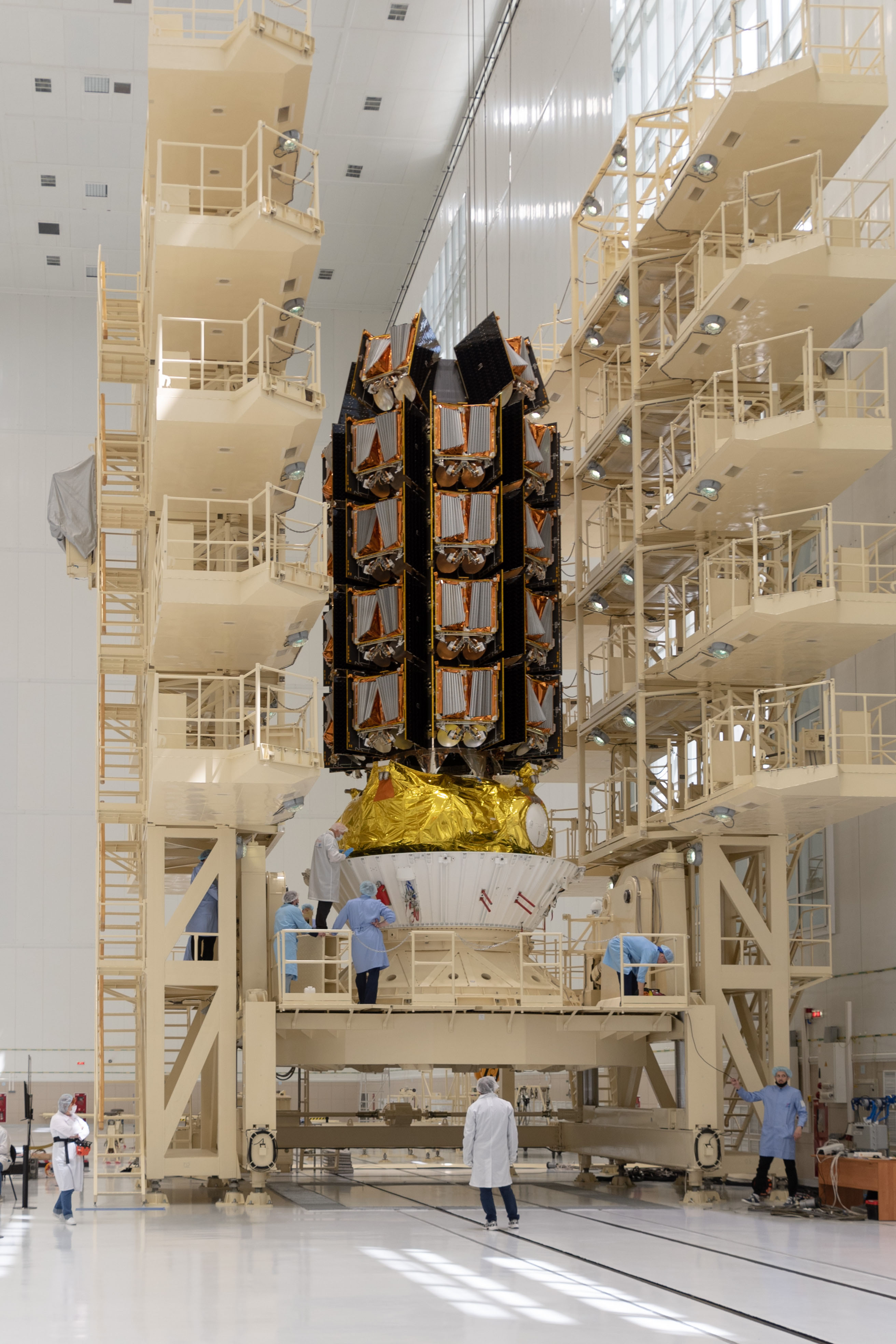Arianespace launches 36 OneWeb internet satellites on Soyuz rocket
A Soyuz rocket blasted off from Russia today (May 28), carrying a new clutch of OneWeb internet satellites into orbit.
The mission, called ST32, is a joint mission between Arianespace and its partner Starsem. At 1:38 p.m. EDT (1738 GMT, or 2:38 a.m. local time on Saturday, May 29), a Soyuz rocket blasted off from the Vostochny Cosmodrome in eastern Russia.
Onboard the rocket was a stack of 36 OneWeb satellites, bringing the total number launched up to 218. With this flight, OneWeb becomes the second largest satellite fleet currently in orbit, behind SpaceX's Starlink.
In Photos: OneWeb Launches New Global Satellite Internet Constellation

After liftoff, it will take roughly 3 hours and 51 minutes for the rocket to deploy its payload into a near-polar orbit.
From their orbital perch, 280 miles (450 kilometers) above the Earth, the satellites will provide internet coverage to traditionally underserved areas north of the 50th parallel, including customers in the U.K., northern Europe, Greenland, Iceland, the Arctic seas and Canada.
That service is expected to start in June, with eventual global coverage following in 2022.
Get the Space.com Newsletter
Breaking space news, the latest updates on rocket launches, skywatching events and more!
Friday’s flight marks the seventh flight overall and the fourth since OneWeb filed for bankruptcy in March 2020. After filing for Chapter 11, the company was acquired by the British government and the Indian telecom, Bhakti Global.
It's also part of an effort to expand the constellation enough to begin service this year. As part of a "Five to 50" campaign, this flight will help inch the constellation closer to 80% capacity, which the company has said will allow it to kick off service this summer.

OneWeb is not the only company that hopes to connect the world — SpaceX, TelStar and Amazon all have the same aspirations, although SpaceX is the only other company currently to have hardware in orbit.
To date more than 1,700 of SpaceX's Starlink satellites have launched, with thousands more planned. OneWeb's initial quota is set to be 650 satellites strong, a stark comparison to SpaceX’s massive fleet.
Last month, Amazon signed an agreement with United Launch Alliance (ULA) to launch nine of its upcoming Kuiper missions on an Atlas V rocket, and TelStar has yet to announce its launch plans.
Friday’s launch blasted off right on time, following a 24-hour delay due to an issue with the rocket's electrical system. Ground crews replaced one of the components and the flight subsequently went off without a hitch.
The flight marked the 3rd of the year from Russia's Vostochny Cosmodrome and the 8th Soyuz launch so far in 2021. The launcher is fueled by rocket-grade kerosene and liquid oxygen.
The 36 OneWeb satellites, which were built in Florida, rocketed to orbit atop a 170 foot-tall (52-meter) Soyuz 1.b rocket. It's four strap-on boosters provided an extra punch at liftoff and then separated two minutes after liftoff.
The rocket's core stage then burned for an additional three minutes before falling back to Earth. A Fregat upper stage completed a series of four burns before depositing the satellites into their orbit.
The OneWeb satellites will deploy in groups of four before unfurling their solar panels and using their xenon-fueled ion propulsion systems to reach the planned operating orbit at an altitude of 745 miles (1,200 kilometers).
Follow Amy Thompson on Twitter @astrogingersnap. Follow us on Twitter @Spacedotcom or Facebook.
Join our Space Forums to keep talking space on the latest missions, night sky and more! And if you have a news tip, correction or comment, let us know at: community@space.com.

Amy Thompson is a Florida-based space and science journalist, who joined Space.com as a contributing writer in 2015. She's passionate about all things space and is a huge science and science-fiction geek. Star Wars is her favorite fandom, with that sassy little droid, R2D2 being her favorite. She studied science at the University of Florida, earning a degree in microbiology. Her work has also been published in Newsweek, VICE, Smithsonian, and many more. Now she chases rockets, writing about launches, commercial space, space station science, and everything in between.









